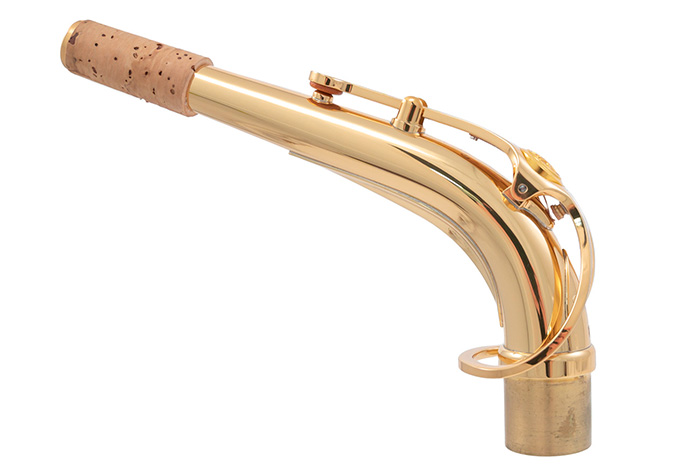Yamaha Sax Custom Necks – for Alto & Tenor
20th October 2020The new range of Custom necks for Yamaha Alto & Tenor Saxophones have proven to be very popular since their introduction. We’re often asked to explain the differences in model design, and in the finishes. So, with the help of top UK player Simon Bates, let’s take a listen to these models in action on Alto Sax…(The Tenor Sax demo is available here)
The Models
There are 3 models to consider. Here’s an overview of the main design differences and what that means to how they play:
C1 Model: The Yamaha C1 Sax neck offers players a solid, centred sound which is easy to control and supplies excellent stability. The C1 has a smaller bore taper than the E1 or V1 which is the most open. This means the C1 tuning is much more manageable in the ‘danger zones’ and it also gives a real focus to the sound.
E1 Model: The Yamaha E1 Sax neck offers players a good compromise between the more compact feeling C1 and the broader and more open tapered V1. It gives a good mix of stable intonation but still with the ability to open up the sound when required.
V1 Model: The Yamaha V1 Alto Sax neck offers players a broad, vibrant sound with huge projection. The V1 has the widest taper of the Yamaha custom necks, compared to the E1 (middle) and C1 (small). The current 82Z model uses a V1 and it gives the broadest sound but does require a strong embouchure to keep the intonation in check at the extremes of the instrument. Not recommended for players without a well controlled and experienced embouchure.
The Materials & Finishes
Not only is there a choice of models, but each model is also available in a variety of finishes. This can be quite subjective in terms of the difference it makes. We would say it’s usually something the player ‘feels’ in terms of response and resistance. It’s not just about the difference it makes to the sound being heard from a distance.
So, with those caveats in mind(!) here’s our opinions on what the differing finishes offer:
Gold Lacquer: Obviously many people will prefer this as it directly matches the look of their Sax. The gold lacquer is probably the most ‘natural’ sounding as it doesn’t impose or add anything in particular to the tone.
Silver Plate: Some players find the Silver Plated models are a little brighter and more complex in terms of the tonal brilliance. This can be a subtle difference, so we advise testing back-to-back if possible.
Gold Plate: The gold plated models tend to offer a richer, broader, more vibrant tone that really sparkles. It’s essentially like getting your standard lacquer model turbo-charged, it just gives you MORE!
Solid Silver: This is not just a finish but a core material difference. Solid Silver is heavier than brass and thus responds and emits tone differently. We’d say it gives a bigger, tubbier, punchier sound all around.
Demonstrations
Let’s take a listen to the different finishes, this time demonstrated on Tenor Sax…(The Alto Sax demo is available here)
How Do I Know Which To Choose?
It would be easy to fall into the trap of thinking – the more experienced the player, the more open the taper you should choose. ie. C1 > E1 > V1 on a sliding scale of experience. However, we’ve got very experienced players (one on staff for example) who prefer the centred, solid sound the C1 offers. So, it’s all about balancing the elements and that includes how open/closed your mouthpiece is, and whether you prefer a little resistance or like a very open feel. Do you feel you want your sound to be solid, more centred and richer? Or, are you looking for more breadth, volume and power?
If you’re not sure about the answers to the Q’s above then that’s a good place to start. Try to de-construct your current sound and how you might like to change it. If you’d like some advice from us, as fellow players, then do use our contact form to get in touch and we’d be happy to help advise.
You can try a couple of these out on approval, so this way you can test two models back-to-back.
In Summary
These Custom necks are a great way to vary up your sound, without changing a mouthpiece you love on a Sax you love. Yes, they are specifically designed for Yamaha Sax players, but they can work with some other brands. However, it’s worth remembering the tuning scale of your Sax is essentially determined by the taper of the bore from the tip of the crook through to about the A or G key tone hole on the left hand (leaving the mouthpiece and oral cavity out for a moment!). As such, it’s worth considering that adding a Yamaha to a Selmer, or a Yanagisawa will (a) possibly need some fitting adjustment and (b) affect the overall tuning scale compared to what you are used to.
If you do own a Yamaha Sax, for example a 62, these necks are a great way to power up your tone and we’d advise checking them out.
View the full range of Saxophone necks online. Need some help? Use our contact form to get in touch with our advisors.
